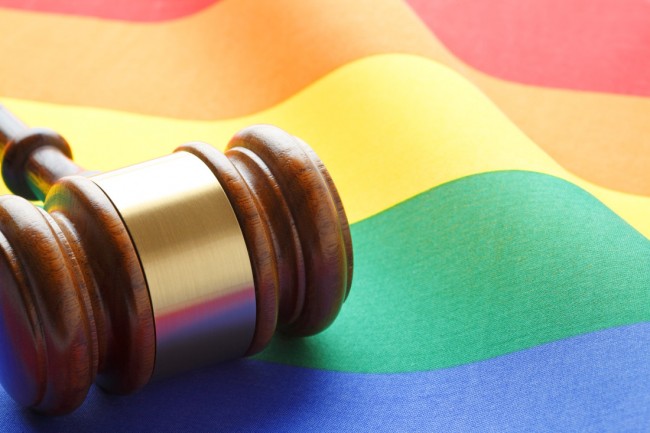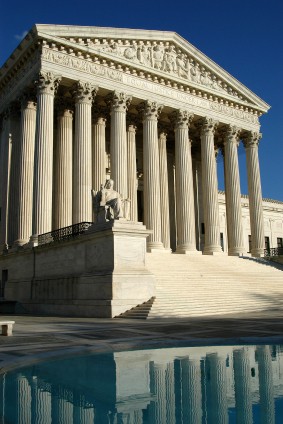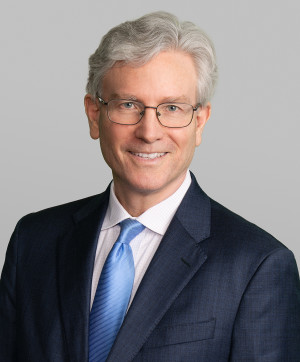Show posts for: Title VII
-
 Read more
Read moreOn May 29, Roseanne Barr posted a tweet comparing former Obama adviser Valerie Jarrett to an ape. ABC’s reaction was swift and decisive: it fired Barr and cancelled her show.
ABC’s decision led to pontification from various pundits and Twitter personalities arguing that Barr’s “humor” was somehow “free speech” protected by the First Amendment.
But even if Barr was exercising free speech when she posted her tweets, that has no bearing on ABC’s lawful right to fire her. ABC is a private employer, not the government, so the First Amendment did not prevent it from taking action based on employee speech.
-
 Read more
Read moreCompanies and individuals frequently enter into arbitration agreements requiring that claims be brought before a private arbitrator, rather than a judge and jury. Arbitration has various benefits: it can provide quicker resolutions, reduced costs, the right to participate in the selection of the arbitrator, and arbitral expertise. In addition, some parties prefer arbitration because it offers a cloak of confidentiality that does not exist in the state and federal courts.
-
 Read more
Read moreWhen the calendar flips from December to January, it’s a good time to take stock of what to expect over the next 12 months. Here are four major issues in employment law that we’ll be watching in 2018:
-
 Read more
Read moreFederal law—specifically, Title VII of the Civil Rights Act of 1964—prohibits employers from discriminating against employees based on a number of protected characteristics, including sex, race, national origin, and religion.
One major open question, however, is whether Title VII prohibits employers from discriminating based on sexual orientation. For example, if a job candidate is openly gay, can the employee refuse to hire that person because of his sexual orientation without violating federal law?
The Supreme Court has never spoken on the issue.
-
 Read more
Read moreThe ongoing trial in Ellen Pao v. Kleiner Perkins Caufield and Byers has made headline news across the country. It’s being covered by the Wall Street Journal and USA Today, among other national publications. Those interested in following the trial can monitor the #ellenpao hashtag on Twitter, or watch liveblogs from Re/code or the San Jose Mercury-News.
Why is the trial so newsworthy? As we reported here, Pao claims that Kleiner Perkins, a prominent Silicon Valley venture capital firm, discriminated against her because of her gender and then retaliated because she complained. She claims that she was not promoted to a plum senior partner position because she was a woman, and that the firm fired her because she complained and later sued it. Her story involves sex, boorish behavior, and office intrigue that ranges from the mundane to the highly dramatic.
With that introduction, here are some -- of many -- takeaways for employers from what has transpired thus far:
-
 Read more
Read moreYesterday, the Supreme Court heard argument in the religious discrimination case of EEOC v. Abercrombie & Fitch Stores, Inc., which made our list as one of our five issues to watch for 2015. The case arises under Title VII, the federal law that makes it illegal for an employer “to discriminate against any individual with respect to h[er] compensation, terms, conditions, or privileges of employment, because of such individual’s . . . religion.” The EEOC alleges that Abercrombie, purveyor of “authentic American clothing,” discriminated against Samantha Elauf on religious grounds. The company refused to hire Elauf because she wore a headscarf, or hijab, to her job interview, and the company’s “Look Policy” prohibited employees from wearing “caps.”
In earlier depositions in the case, Elauf’s interviewer at Abercrombie testified that she “assumed that [Elauf] was Muslim,” and “figured that was the religious reason why she wore her head scarf.” The interviewer said that she went to her district manager to discuss the headscarf issue, and told him that “[Elauf] wears the head scarf for religious reasons, I believe.” The interviewer testified that the district manager then told her not to hire Elauf because of the headscarf and said, “[S]omeone can come in and paint themselves green and say they were doing it for religious reasons, and we can’t hire them.” As a result, the interviewer lowered Elauf’s “appearance” score on her evaluation, and Elauf didn’t get the job.
Despite this testimony, the Tenth Circuit still entered summary judgment for Abercrombie, holding that the EEOC’s discrimination claim could not proceed to trial because Elauf “never informed Abercrombie prior to its hiring decision that she wore her headscarf or ‘hijab’ for religious reasons and that she needed an accommodation for that practice, due to a conflict between the practice and Abercrombie’s clothing policy.”
The fact that the Tenth Circuit granted summary judgment, even though the interviewer admitted that she assumed that Elauf wore the scarf for religious reasons, helps explain the concerns, and potential solutions, that the Justices raised in yesterday’s argument.
-
Read more
Did you hear the one about the Buddhist marketing director who refused an order to add Bible verses to the daily morning e-mail he sent to all employees – and then got fired the next day, after an otherwise successful eight-year career?
This is, of course, not an opening line to a joke, but another installment in our occasional series about the intersection of religious beliefs (of all types) and employment – also of all types. Religion and employment issues – whether it’s an employee in the C-suite or someone further along the hierarchy – almost never mix well. Just this week, of course, nine of our fellow lawyers who happen to sit on the Supreme Court are hearing arguments in two cases about whether a company with a religious belief about contraception is exempt from the Affordable Care Act’s requirements for employer-provided health insurance.
Far away from the hallowed marble home of the Supreme Court (which, by the way, we think is in a fine building -- unlike former Justice Harlan Fiske Stone) and down in the Eastern District of Texas, a new suit raises an interesting question of prohibited religious discrimination under Title VII: namely, can a fired Buddhist employee win damages from a company that, he says, fired him after eight years because he refused to put Bible quotations in the daily e-mail his employer had him write and send to all of the company’s 500 employees?
-
Read more
There’s been another important development in the legal landscape with respect to age discrimination cases, as last week a federal district court in Oklahoma ruled that the EEOC could proceed to trial on behalf of an employee who alleges that she was terminated by her employer for being “old and ugly.” Equal Employment Opportunity Commission v. Kanbar Property Mgmt., LLC, Case No. 12-CV-00422-JED-TLW (Aug. 23, 2013). (Although similar factually, this is a different lawsuit than the “you’re not that pretty” case discussed by our colleague Bill Schreiner last week, which survived a motion to dismiss.)
If you’re not an employment lawyer, this might strike you as the proverbial “dog bites man” headline. After all, if you can't be fired for being old, certainly you can't be fired for being old and ugly, right? Right?
Well, as it turns out, the law isn’t quite so straightforward. Read on….
-
Read more
In the previous part, we looked at Elke Tober-Purze’s lawsuit against her employer, the City of Evanston. The federal court hearing the case ruled in Tober-Purze’s favor on Evanston’s motion to dismiss her claim that it had discriminated against her by paying her male colleagues more and ultimately terminating her from her job as an assistant city attorney.
In the same opinion, the court also denied Evanston’s motion to dismiss Tober-Purze’s claim for age discrimination based on federal law. That law – the Age Discrimination in Employment Act – requires an aggrieved employee to demonstrate that he or she: 1) is over forty; 2) otherwise meets the employer’s expectations; 3) suffered an adverse employment action – such as being terminated or passed over for promotion; and 4) was treated less favorably than others who are not over forty.
-
Read more
The toughest part of this post, for me, is how to categorize this one: does this go in my file of “Things Not To Do At Work?” Or is this one another example of “Lawyers Behaving Badly?” Or maybe “Generally Unacceptable Management Styles?”
Well, I’ll let you decide. But here is the takeaway: however you categorize it, it’s likely a bad idea to tell a woman that works for you that she’s “not that pretty,” that prior female employees were “smart…good-looking…just gorgeous” and used to wear tight sweaters, and that “it’s all been downhill since women got the vote.”
Statements like that can give rise to allegations of gender discrimination in violation of Title VII of the Civil Rights Act that can survive a motion to dismiss. That’s what the City of Evanston, Illinois learned last week, in Elke Tober-Purze v. Evanston, pending in federal court for the Northern District of Illinois.
As the regulatory and business environments in which our clients operate grow increasingly complex, we identify and offer perspectives on significant legal developments affecting businesses, organizations, and individuals. Each post aims to address timely issues and trends by evaluating impactful decisions, sharing observations of key enforcement changes, or distilling best practices drawn from experience. InsightZS also features personal interest pieces about the impact of our legal work in our communities and about associate life at Zuckerman Spaeder.
Information provided on InsightZS should not be considered legal advice and expressed views are those of the authors alone. Readers should seek specific legal guidance before acting in any particular circumstance.
Contributing Editors

John J. Connolly
Partner
Email | +1 410.949.1149

Andrew N. Goldfarb
Partner
Email | +1 202.778.1822

Sara Alpert Lawson
Partner
Email | +1 410.949.1181

Nicholas M. DiCarlo
Associate
Email | +1 202.778.1835




